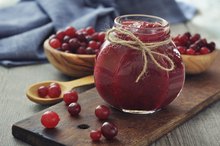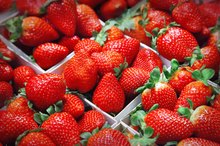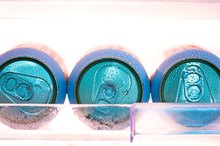What does fact checked mean?
At Healthfully, we strive to deliver objective content that is accurate and up-to-date. Our team periodically reviews articles in order to ensure content quality. The sources cited below consist of evidence from peer-reviewed journals, prominent medical organizations, academic associations, and government data.
- EPMA Journal: The Efficacy of Probiotics for Monosodium Glutamate-Induced Obesity: Dietology Concerns and Opportunities for Prevention
- EPMA Journal: The Efficacy of Probiotics for Monosodium Glutamate-Induced Obesity: Dietology Concerns and Opportunities for Prevention
- Annals of Rheumatic Diseases: Sugar-Sweetened Beverage Consumption: A Risk Factor for Prevalent Gout With SLC2A9 Genotype-Specific Effects on Serum Urate and Risk of Gout
- Annals of Rheumatic Diseases: Sugar-Sweetened Beverage Consumption: A Risk Factor for Prevalent Gout With SLC2A9 Genotype-Specific Effects on Serum Urate and Risk of Gout
The information contained on this site is for informational purposes only, and should not be used as a substitute for the advice of a professional health care provider. Please check with the appropriate physician regarding health questions and concerns. Although we strive to deliver accurate and up-to-date information, no guarantee to that effect is made.
Food Additives to Avoid With Gout
In addition to avoiding foods that are very high in purines, people with gout need to avoid any additives that trigger a flare-up. Gout occurs when uric acid crystals build up in your joints, commonly in the big toe. Not everyone is sensitive to the same additives or to the same degree. Work with your doctor to determine whether you need to limit or completely avoid food additives that may trigger an attack.
Be Alert for Guanylates
When reading food labels, check for disodium guanylate or any of its derivatives. Guanylates are converted to uric acid and may trigger a gout flare-up. Disodium guanylate is used commercially as a flavor enhancer in foods like processed meats, salad dressings, gravies, instant soups and chicken salads. It's particularly used to enhance meaty flavors in packaged foods. You may also find it listed on the label under the names guanosine monophosphate, calcium guanylate, guanylic acid, dipotassium guanylate and potassium guanylate.
- When reading food labels, check for disodium guanylate or any of its derivatives.
- Guanylates are converted to uric acid and may trigger a gout flare-up.
Check for Inosinates
Potassium Bisulphite as a Food Preservative
Learn More
Like guayanates, inosinate is used to enhance the meaty flavor in packaged foods and is converted to uric acid in your body. It's commonly used along with guayanates for a combined flavor-enhancing effect. You'll find it in powdered soup mixes, broths, sauces, soybean-based seasonings and condiments, mushroom dishes, ready-to-eat savory meals, and dried or dehydrated vegetable products. Inosinate may also be listed as disodium inosinate, calcium inosinate or potassium inosinate.
- Like guayanates, inosinate is used to enhance the meaty flavor in packaged foods and is converted to uric acid in your body.
Keep an Eye Out for MSG
Monosodium glutamate is used to enhance the savory flavor of a variety of foods. Available data suggests that people with gout may have an impaired ability to breakdown glutamate, according to a review published in the January 2014 issue of the EPMA Journal. The authors found evidence that people with gout have elevated levels of glutamate and that it may play a role in high uric acid levels. MSG is also commonly used with additives that are converted to uric acid, like inosinates and guanylates. This additive may be listed as hydrolyzed vegetable protein, textured vegetable protein or yeast extract.
- Monosodium glutamate is used to enhance the savory flavor of a variety of foods.
- Available data suggests that people with gout may have an impaired ability to breakdown glutamate, according to a review published in the January 2014 issue of the EPMA Journal.
Certain Sweet Additives
Malic Acid Vs. Citric Acid
Learn More
High-fructose corn syrup and table sugar are extremely prevalent additives used to give many foods a sweet flavor. Beverages sweetened with either of these additives raise uric acid and increase the risk of gout flare-ups in people with a certain gene variant, according to a study published in the December 2014 issue of the journal Annals of Rhuematic Diseases 3. Drinking fewer beverages sweetened with sugar or HFCS helps manage gout, according to the authors.
Related Articles
References
- The Encyclopedia of Nutrition and Good Health; Robert A. Ronzio
- EPMA Journal: The Efficacy of Probiotics for Monosodium Glutamate-Induced Obesity: Dietology Concerns and Opportunities for Prevention
- Annals of Rheumatic Diseases: Sugar-Sweetened Beverage Consumption: A Risk Factor for Prevalent Gout With SLC2A9 Genotype-Specific Effects on Serum Urate and Risk of Gout
- National Institute of Arthritis and Musculoskeletal and Skin Diseases. Gout. Updated April 2016.
- Zhang Y, Chen C, Choi H, et al. Purine-rich foods intake and recurrent gout attacks. Ann Rheum Dis. 2012; 71(9):1448-53. doi:10.1136/annrheumdis-2011-201215
- Fischer E. Ueber die Harnsauer. 1 [On Uric Acid. 1]. Berichte der Deutschen Chemischen Gesellschaft. 1884: 17:328-338. doi:10.1002/cber.18980310304
- Ragab, G., Elshahaly, M., & Bardin, T. (2017). Gout: An old disease in new perspective – A review. Journal of Advanced Research, 8(5), 495–511. doi:10.1016/j.jare.2017.04.008
- Centers for Disease Control and Prevention. Gout. Updated January 28, 2019.
- Zgaga, L., Theodoratou, E., Kyle, J., Farrington, S. M., Agakov, F., Tenesa, A., … Campbell, H. (2012). The Association of Dietary Intake of Purine-Rich Vegetables, Sugar-Sweetened Beverages and Dairy with Plasma Urate, in a Cross-Sectional Study. PLoS ONE, 7(6), e38123. doi:10.1371/journal.pone.0038123
- Choi HK, Gao X, Curhan G. Vitamin C intake and the risk of gout in men: a prospective study. Arch Intern Med. 2009;169(5):502–507. doi:10.1001/archinternmed.2008.606
- Zhang Y, Neogi T, Chen C, Chaisson C, Hunter DJ, Choi HK. Cherry consumption and decreased risk of recurrent gout attacks. Arthritis Rheum. 2012;64(12):4004–4011. doi:10.1002/art.34677
- Arthritis Foundation. Gout Diet: Dos and Don’ts.
- Boban M, Modun D. Uric acid and antioxidant effects of wine. Croat Med J. 2010;51(1):16–22. doi:10.3325/cmj.2010.51.16
- Caliceti C, Calabria D, Roda A, Cicero AFG. Fructose Intake, Serum Uric Acid, and Cardiometabolic Disorders: A Critical Review. Nutrients. 2017;9(4):395. Published 2017 Apr 18. doi:10.3390/nu9040395
- U.S. Department of Health and Human Services and U.S. Department of Agriculture. 2015–2020 Dietary Guidelines for Americans. 8th Edition. Published December 2015.
- U.S. Department of Health and Human Services. Gripped by Gout. NIH News in Health. Published February 2014.
- Kakutani-Hatayama M, Kadoya M, Okazaki H, et al. Nonpharmacological Management of Gout and Hyperuricemia: Hints for Better Lifestyle. Am J Lifestyle Med. 2015;11(4):321–329. Published 2015 Sep 2. doi:10.1177/1559827615601973
Writer Bio
Janet Renee is a clinical dietitian with a special interest in weight management, sports dietetics, medical nutrition therapy and diet trends. She earned her Master of Science in nutrition from the University of Chicago and has contributed to health and wellness magazines, including Prevention, Self, Shape and Cooking Light.









